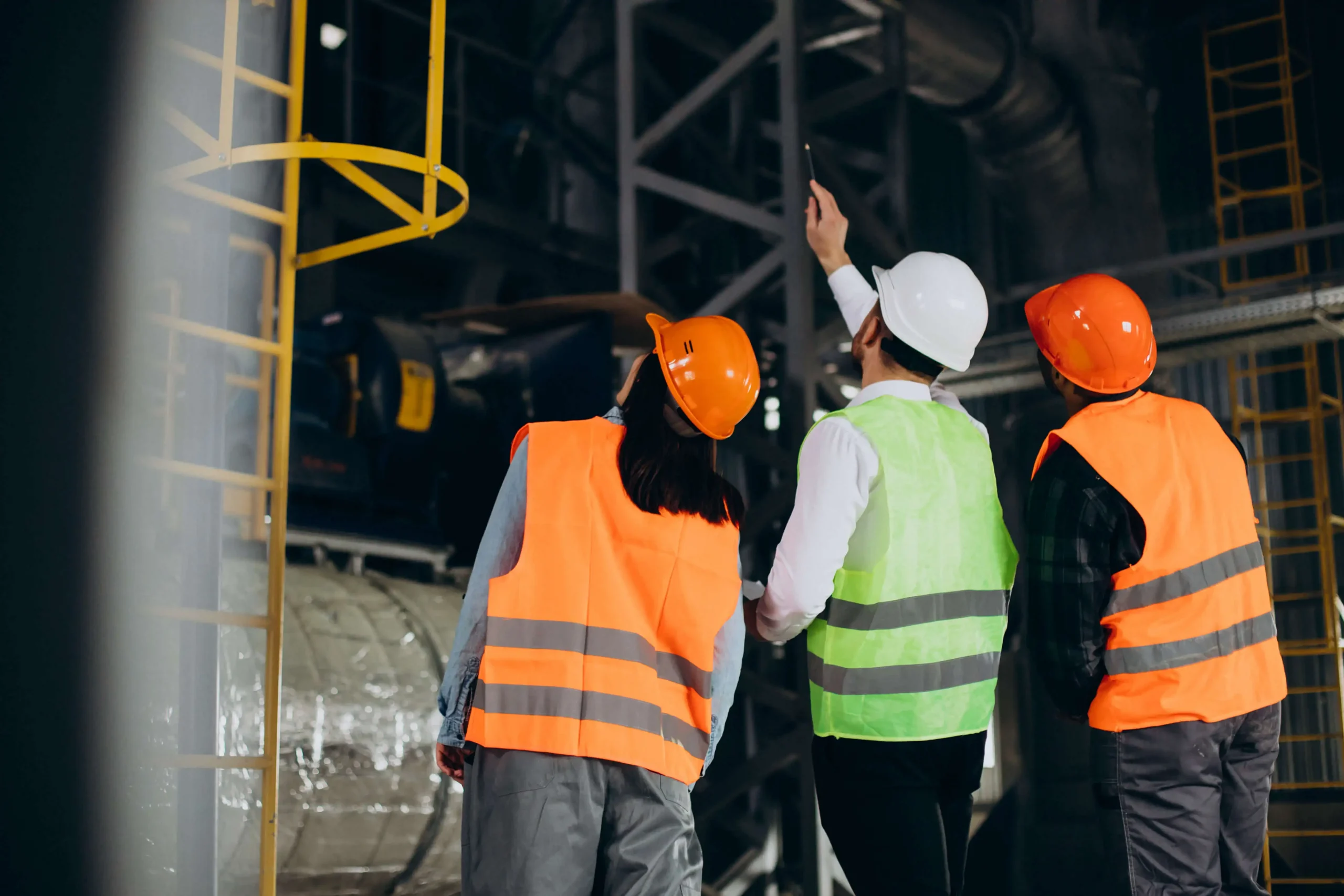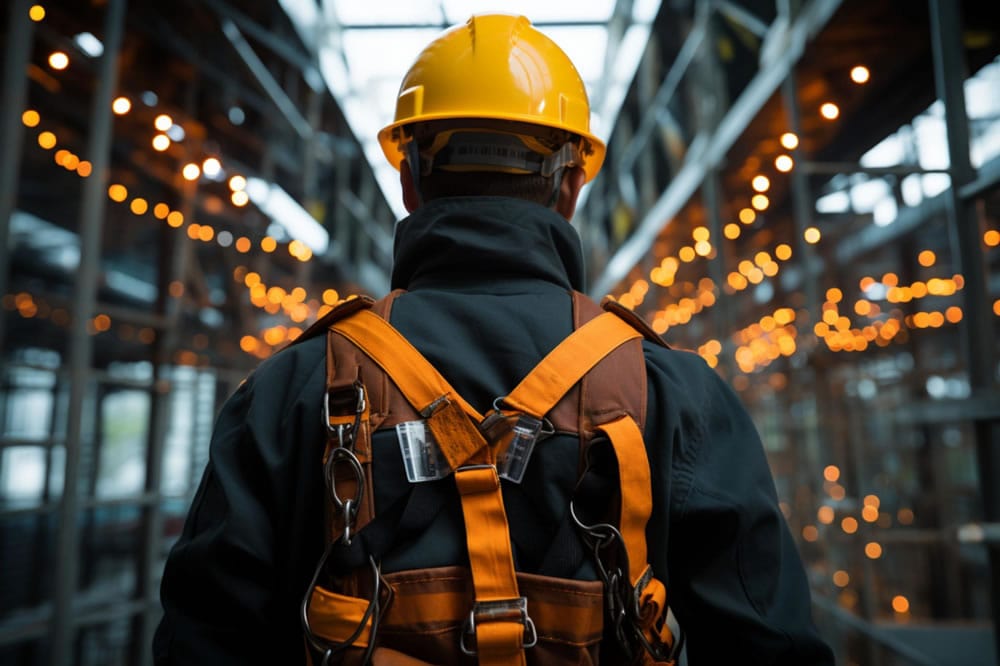Workplace health and safety is only as strong as its weakest link. And too often, the weakest link is a gap no one noticed, a rushed induction, a missing update or a rule that never makes it from the handbook to the frontline. These slip-ups might seem small, but they’re the ones that cause the biggest problems: accidents, lost productivity, compliance failures and, most importantly, people getting hurt.
In this article, we’ll reveal seven of the most common gaps that put workplace health and safety at risk. More importantly, we’ll explore how smart organisations are closing them, turning safety from a tick-box task into a culture that protects people and powers performance.

1. Inconsistent Training and Onboarding
The most dangerous worker on site isn’t the one handling heavy machinery, it’s the one who was never properly trained to use it. Yet training and onboarding in construction are often inconsistent. Some workers sit through a full induction, others get a rushed briefing, and certifications slip through the cracks. The result is uneven knowledge across the team, leaving gaps that put everyone at risk.
According to the Associated General Contractors of America, 80% of contractors struggle to find qualified craft workers, forcing many to assign jobs to underprepared crews just to keep projects moving. It’s a risky shortcut. OSHA consistently points to inadequate training as a key factor in workplace incidents, especially in high-risk industries like construction.
The solution is clear: training must be consistent, documented and accessible. When every worker begins with the same foundation, safety stops being a gamble and becomes part of the culture, protecting people, ensuring compliance and keeping projects on track.
2. Poor Communication Between Office and Field
In construction, a message missed is money lost. When updates don’t make it from the office to the frontline, crews work from outdated plans, creating delays, rework and even safety risks. And the costs are staggering: the Construction Disconnected report by PlanGrid and FMI found that miscommunication and data gaps cause 52% of all rework, draining more than $31 billion each year in U.S. construction alone.
The problem doesn’t stop there. A PMI study revealed that ineffective communication is the single biggest driver of project failure, responsible for 56% of project risks and costing companies about $75 million for every $1 billion spent. Behind each of those numbers are real delays, wasted hours and frustrated crews waiting for clarity that never comes.
Every misdirected memo, delayed alert, or unshared update chips away at progress. To keep sites safe, productive and on schedule, communication can’t lag, it needs to move in real time, just like the work itself.
3. Outdated or Incomplete Safety Records
In safety, what isn’t recorded might as well not exist. Yet many organisations still rely on paper checklists, scattered spreadsheets or outdated databases. When records are missing or incomplete, managers lose visibility into whether inspections happened, certifications are valid or corrective actions were ever closed. The gaps don’t show up in real time, they surface later, during a failed audit or after an incident that could have been prevented.
The price of bad data is enormous. Research from Autodesk and FMI shows that poor-quality data causes 14% of avoidable rework in construction, equating to $1.8 trillion in global losses annually. In health and safety, that translates to missed inspections, overlooked hazards and compliance blind spots that put people at risk.
Closing this gap starts with digital record-keeping. When safety data is updated in real time, shared across teams and automatically logged, it gives leaders confidence that their records match the reality on site. That clarity not only makes audits easier, it prevents risks from falling through the cracks in the first place.
4. Weak Incident and Near-Miss Reporting
Every serious accident starts with warning signs. A loose cable, a blocked exit, a machine behaving oddly, these “near-misses” are opportunities to act before disaster strikes. But too often, they go unreported. Workers may see reporting as time-consuming, managers may not follow up or paper forms get lost. The result is a blind spot where risks build quietly until they cause real harm.
The scale of the problem is easy to underestimate. For every major accident, there are often dozens of smaller incidents and near-misses that could have served as warnings. Yet many of these warnings slip through the cracks because reporting systems are weak or inconsistent. In construction, that gap turns into preventable accidents, compliance failures and costly downtime.
Closing it takes more than forms, it takes a culture where reporting is fast, simple and valued. When every near-miss is captured and acted on, teams don’t just react to accidents, they prevent them. Workers feel heard, managers gain insight and projects move forward safer and stronger.
5. Compliance Treated as a One-Time Exercise
Compliance isn’t a date on the calendar, it’s a daily responsibility. Yet many organisations treat it like a one-off event, scrambling before audits, renewing certificates or gathering paperwork only when inspectors are due. Once the pressure passes, safety routines slip, records fall behind and risks quietly build until something goes wrong.
That stop-start approach is part of the reason poor workplace safety practices cost the global economy $1.3 trillion every year, according to the International Labour Organization (ILO). In construction especially, regulators like OSHA rarely cite companies for lacking policies; they cite them because procedures weren’t followed consistently on site.
Real compliance isn’t about surviving an audit, it’s about creating habits. When training, safety checks and reporting become everyday practices, inspections turn into formalities, risks stay low and teams can focus on building with confidence.
6. Overlooked Contractor and Visitor Safety
Contractors and visitors walk the same sites and face the same hazards as employees, but too often, they don’t get the same protection. Inductions are skipped to save time, safety briefings are inconsistent and compliance checks fall through the cracks because everyone assumes someone else handled them. The result is a group of people exposed to risks without the same safeguards as core staff.
And it shows in the data: contract workers account for nearly 17% of all fatal occupational injuries in the U.S., according to the Bureau of Labor Statistics. In industries like construction, where subcontracting is common, this gap is not just dangerous, it’s costly, exposing companies to legal penalties and reputational damage.
Closing this gap means making safety universal. Contractors must receive the same training and compliance checks as employees and visitors must be briefed before stepping onto hazardous sites. When safety is applied without exceptions, organisations reduce accidents, strengthen compliance and show that every person on site matters.
7. Lack of Accountability and Tracking
The best safety plan fails the moment no one is accountable for it. Without clear ownership and tracking, there’s no way to know if inspections were carried out, hazards were reported or procedures were followed properly. Too often, tasks are “assumed” to be done, only for gaps to surface after an accident, when it’s already too late.
Research from PlanGrid and FMI shows that construction professionals lose up to 35% of their time to non-productive work like chasing updates or correcting errors, much of it due to poor visibility and unclear responsibilities. In safety, that wasted time translates to missed checks, delayed responses and preventable risks.
The fix is transparency. When responsibilities are clearly assigned and progress is tracked in real time, safety stops being guesswork. Everyone knows what’s done, what’s pending and who’s responsible. Accountability keeps safety visible and what’s visible gets done.
Closing the Safety Gaps That Put Teams at Risk
Workplace health and safety isn’t undone by the big things we see coming, it’s the small, hidden gaps that put teams most at risk. Poor communication, rushed training, outdated records, weak reporting, box-ticking compliance, overlooked contractors and lack of accountability all create cracks where accidents, delays and costs can take hold. Closing these gaps requires more than policies or checklists. It takes a system that makes safety visible, consistent and part of everyday work.
That’s exactly what EHSwise is designed for. By connecting office and field teams, tracking compliance in real time and making safety tasks simple to complete and monitor, it helps you turn safety from a one-time exercise into a living culture. With clear records, faster reporting and universal accountability, EHSwise closes the gaps before they become risks, so projects stay safe, compliant and productive.
Ready to see how EHSwise can help you strengthen workplace health and safety in your organisation? Book a demo today.


